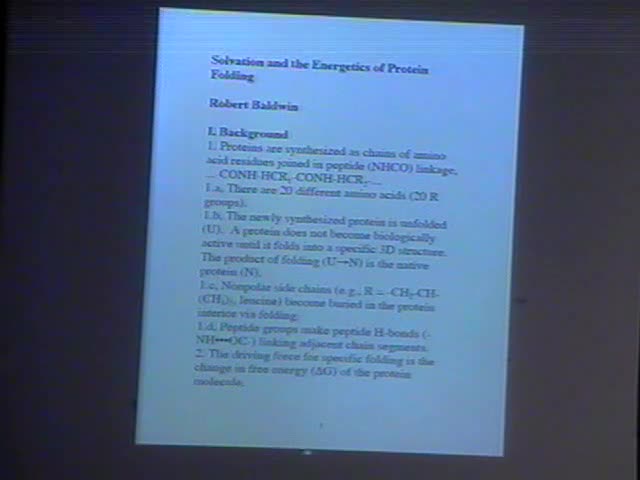Solvation and the energetics of protein folding
Presenter
December 8, 2008
Keywords:
- protein
MSC:
- 92D20
Abstract
Solvation makes major contributions to the energetics of protein folding. In an unfolded protein the free energy of solvating nonpolar side chains is unfavorable while solvating polar peptide groups is favorable. The classical model for the energetics of burying nonpolar side chains through folding is Kauzmann's 1959 proposal to use transfer data for model hydrocarbons from water to an organic solvent. The simple picture is that 50 square angstroms of water-accessible surface area (ASA) per average side chain is buried via folding and -25 cal mol-1 is gained per square angstrom or -1.25 kcal mol-1 per residue. Today this model is regarded as seriously over-simplified and side chain burial is modeled by a 2-step process. (1) First remove the nonpolar side chain from water, using liquid to gas phase transfer data; (2) pack the folded protein side chains using the Lennard-Jones potential and protein structural coordinates to find the packing energy. A major unsolved problem is the highly approximate proportionality between solvation free energy and ASA. Model compound data give a huge value for the solvation enthalpy of the peptide group (-14.2 kcal/mol, Makhatadze & Privalov, 1993), more than 10 times larger than the free energy change per residue for burying nonpolar side chains. Its size shows that more work is badly needed on determining accurate energetics for peptide solvation and forming peptide H-bonds. Recent work shows that the principle of group additivity is not valid for the polar peptide group.
